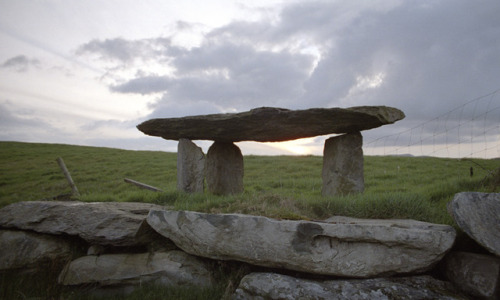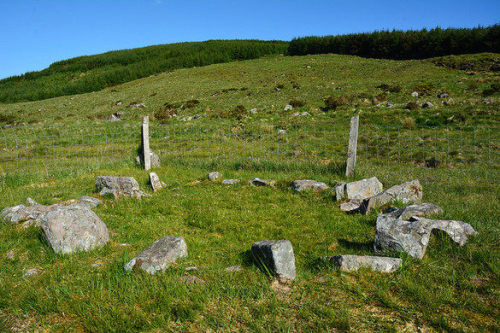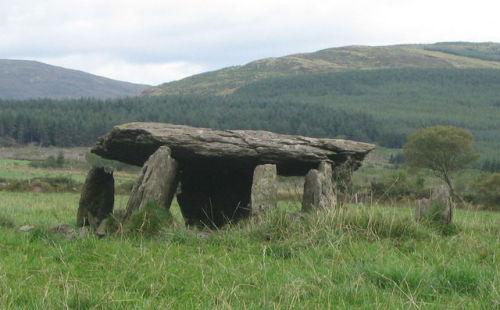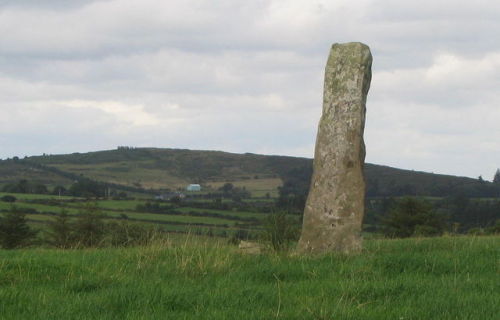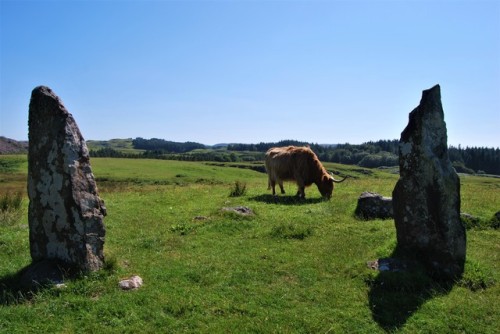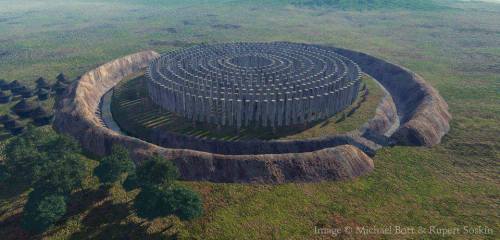#standing stones

‘Swinside Stone Circle’ Pen and Ink Sketch, March 2020.

‘Old Bourbushtree Stone Circle’ Pen and Ink Sketch, March 2020.
All rights reserved, 2020. Repost only with credits.

‘Druid’s Altar’ Stone Circle Pen, Ink and Watercolour Sketch, March 2020.

Ballymeanoch Prehistoric Standing Stones, Kilmartin Glen, Argyll, Pen and Ink Sketch and Wash, October 2019.

Nether Largie Standing Stone, Kilmartin Glen, Argyll, Pen and Ink Sketch, October 2019.

Y Ffor (Four Crosses) Prehistoric Burial Chamber, North Wales, Pen and Ink Sketch, October 2019.
All rights reserved. Repost only with credits.

Stones Monolith, Todmorden, Calderdale, Pen and Ink Sketch, 26.8.19.
All rights reserved. Repost only with credits.
Knocknakillais a megalithic complex in Ireland that is rich with archaeological artifacts. The site includes 3 ringed hillforts, a burn mound, a portal stone, a dolmen, several standing stones, a stone circle, and a cairn.
Post link
Glengorm standing stones, Isle of Mull, Scotland 2017
Three standing stones (around 2 metres high) occupy a commanding position on the end of a ridge in the broken ground to the west of Glengorm Castle. In the early 1880s only one of the stones was upright, but the other two had been re-erected by 1942. The stones are surrounded by a modern enclosure-bank and the packing-stones visible around the two re-erected stones are also of a recent date. The site was excavated as part of a four week survey of the stone alignments of northern Mull. The northernmost of the three stones appears to have been re-erected near its original position, while the southernmost stone has been dragged NE, to be wedged upright in a cleft in the bedrock. The original alignment did not repeat the trend of other sites in the area. Further conclusions await processing of the survey data.
The existence of a large mound of stones nearby was recorded in 1883, but it is no longer visible, and it is not clear from the description whether it was a prehistoric burial cairn or not.
Glengorm was originally known as Sorne. In 1850, the new landlord, one James Forsyth, began to ‘improve’ his estate in the usual fashion in the Highlands - by clearance. The main house was replaced by a large and imposing baronial 'castle’. Forsyth sought advice on a new name for the estate from one of the few remaining tenants of the land, an old lady, and she suggested Glengorm, meaning Blue Glen. Little did he suspect that the name would commemorate, for all time, the days when the glen was indeed blue with smoke from the burning homesteads.
Post link
The megalithic portal of Cashtal-yn-Ard, Maughold parish, Isle of Man. The ancient burial chamber known as ‘Cashtal-yn-Ard’ stands on the edge of a hill to the northeast of Glen Mona, just to the south of Cornaa in the parish of Maughold, and close to the eastern coastline of the Isle of Man. It is quite a large megalithic structure at 130 feet in length. The name “Cashtal-yn-Ard” is thought to mean “The Castle of the Heights”. Situated on raised land near the coast, the site provides impressive views overlooking most of the parish of Maughold and across the sea to the Lake District. Cashtal-yn-Ard is a large, oblong shaped chambered cairn, of ‘Clyde-Carlingford’ type, dating from the late Neolithic Age – roughly between 1,800-2,000 BC. It covers a large area of 40m (131 ft) long and 14m (46 ft) wide, and it still has its outer kerb stones, horned forecourt, entrance and 5 burial chambers. It is roughly aligned west to east. A semi-circular forecourt of six stones at the western end gives access, through a portal of two large standing stones, to a burial chamber of five compartments, originally slab-roofed. The slabs of these burial chambers are angled inwards and some have jagged edges, but sadly all but one of the roof-slabs have been lost, although this long flat-slab might not be the original one. Here unburnt bones, pottery and flints were found. With its five chambers it’s quite similar in structure to the largely intact Brlas Knap long barrow in Gloucestershire. East of the the burial chambers is a mound of earth and stones reddened and fused by heat, which archaeologists can’t explain. The whole monument, apart from the forecourt, was originally covered by a massive oblong cairn 130 feet long. Some of the large standing stones at the entrance have been re-erected or replaced. However, its large earth or stone mound, has gone – the stones now lost to local walls and farm buildings. The monument is very well-preserved and is said to be one of the largest of its kind in the British Isles. (presso Maughold)
Post link
Stuck in lockdown and bored mindless, here’s a distraction. A video tour look back at the superb Outer Hebrides, the unique islands of Scotland’s west coast….
Post link










A beautiful day to explore the Druids Temple, Yorkshire (England)
Photographs ©️hedendom
Stanton Drew Somerset’s a mysterious henge monument The site consists of three circles, one being the largest in England.
The Great Circle is itself contained within a very large buried enclosure ditch (approximately 135m outer diameter). This is about 7m wide and has a broad gap or entrance facing to the north-east. Such enclosures, or henges, are a well known feature of later Neolithic Britain and are assumed to be the foci of ritual activity. Several henges enclose stone circles, and rings of pits are also a feature of some of them. Sites which bear the closest similarity to the patterns emerging at Stanton Drew include Woodhenge, near Stonehenge, and the Sanctuary, near Avebury. At these and other sites, the pits are known to have held timber uprights although it is not clear whether these were part of roofed or open structures. It seems probable that at least some of the pit circles at Stanton Drew once held massive posts. The circles are the largest and most numerous yet recorded at any site and surely indicate the investment of immense effort and enterprise in the service of prehistoric beliefs as yet only dimly perceived.
Read more: http://www.stonehenge-avebury.net/stantondrew/StantonDrew.html
source:The Keltoi
/|\
☽✪☾
The Dance at Alder Cove -Youth/Father/Geezer - I see you
Post link





Edderton Stone Circle and Cist Cairn, Edderton, Scotland










Edderton Stone Circle and Cist Cairn, Edderton, Scotland

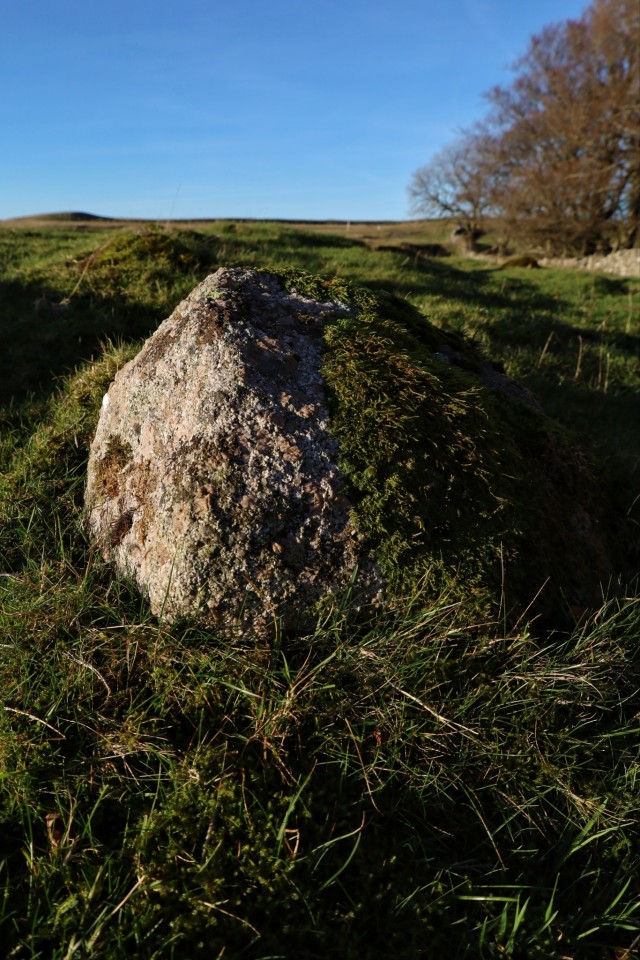


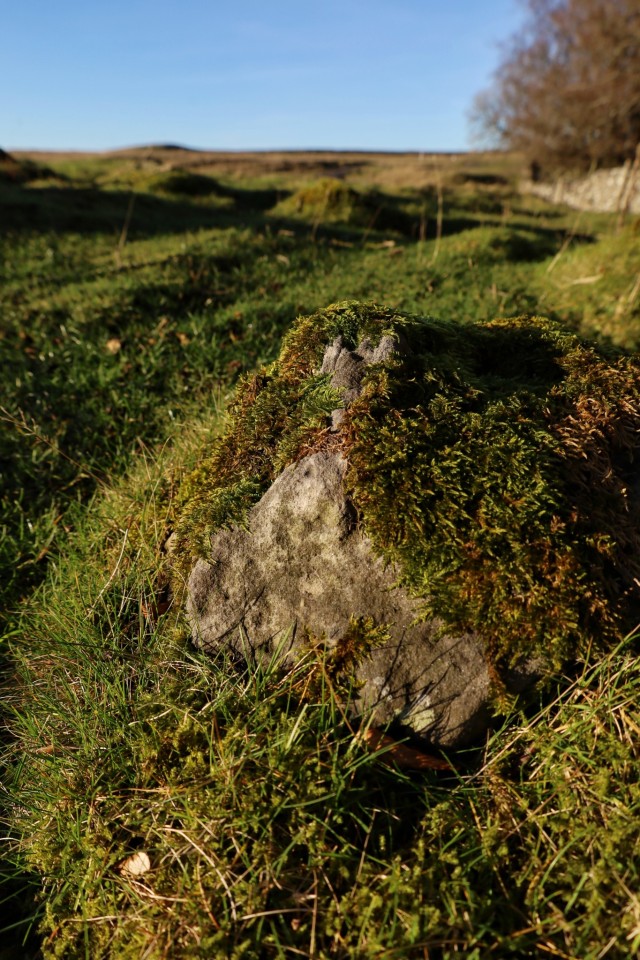




Kalmott Prehistoric Cairn Circle, Oddendale, nr. Shap, Cumbria







Pictish Stone and Cross Slab Fragments, Tarbat Discovery Centre, Tarbat, nr. Tain, Scotland

